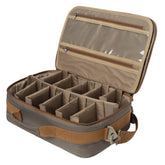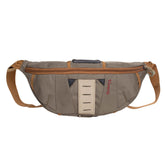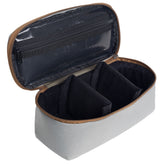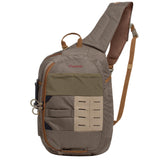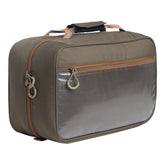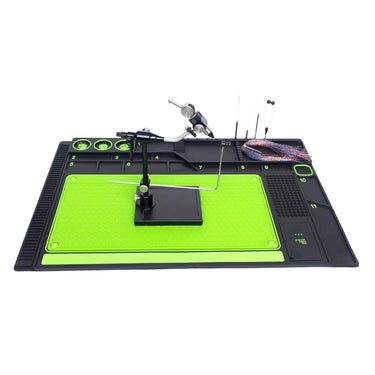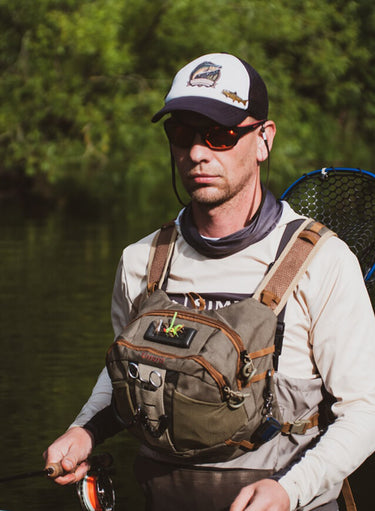Flies: Essential Setup for Big Game and Stream Fishing, Plus Bulk Options
When it comes to fly fishing, selecting the right flies can significantly enhance my angling experience. Understanding the different types of fishing flies—such as stream fishing flies for freshwater environments and big game fishing flies for deeper waters—enables me to target a variety of species effectively. Whether I'm casting a delicate dry fly to entice surface feeders or using bulky saltwater patterns, each choice is crucial to my success on the water.

I often find myself searching for affordable options, particularly when purchasing in bulk. Cheap fishing flies can make a substantial difference in my budget while still providing quality that performs well in different conditions. This approach allows me to explore various techniques and expand my fishing repertoire without breaking the bank.
Exploring the nuances of fly fishing setups also plays a vital role in my success. From choosing the right rod and reel combination to mastering the art of casting, these foundational elements are intertwined with my choice of flies. With the right setup and selection, I'm prepared for any fishing adventure that lies ahead.
Fly Fishing Basics

In fly fishing, mastering the fundamentals is crucial for success on the water. I will explore the essential components of fly fishing, including gear and technique, to help you build a solid foundation.
The Essentials of Fly Fishing
Fly fishing is distinct from traditional fishing due to its reliance on artificial flies. These flies mimic natural food sources, requiring precision in casting and retrieval.
Key Elements:
- Fly Tying: Creating custom flies allows me to match local hatch patterns, improving my chances of attracting fish.
- Casting Techniques: Effective casting requires control and accuracy. Techniques like the roll cast and double haul can enhance my casting performance.
- Presentation: Understanding how to control the fly’s movement in the water is vital. Drag-free presentations can make the difference between a catch and a missed opportunity.
Understanding Fly Fishing Gear
Choosing the right gear plays a significant role in my fly fishing experience. The following components are essential:
- Rod and Reel: A lightweight rod paired with a well-balanced reel is crucial for comfort during extended periods on the water.
- Line Selection: The type of fly line impacts my ability to cast and control the fly. Floating, sinking, or intermediate lines offer different advantages.
- Leaders and Tippet: The leader connects my line to the fly, while the tippet provides durability and invisibility in the water. Properly knotting these can enhance my fishing success.
Being well-equipped and knowledgeable about these essentials sets the stage for an enjoyable fly fishing experience.
Fishing Flies Varieties
Different types of fishing flies play a crucial role in targeting specific fish species. Understanding the nuances between fly varieties can significantly enhance fishing success. I will explore three primary types of fishing flies: dry flies, nymphs, and streamers, focusing on their unique characteristics and ideal usage.
Dry Flies Versus Nymphs
Dry flies are designed to float on the water's surface, mimicking adult insects. They are often used during times when fish are feeding on top. I find that these flies require precise casting and can be highly effective during hatches.
Nymphs, on the other hand, imitate the underwater larval stage of insects. They usually sink below the surface, where many fish spend a significant amount of time feeding. When using nymphs, I prefer to adjust my depth based on water conditions, as this can greatly affect my catch rate.
The Allure of Streamers
Streamers are larger flies that imitate baitfish or other aquatic creatures. Their size and movement in the water attract predatory fish, making them effective for targeting species such as bass, pike, and trout.
I often use streamers with a stripping technique, where I retrieve the fly in short bursts, mimicking the natural movement of prey. The versatility of streamers allows me to fish in various conditions, from still waters to swift currents.
Targeting Fish Species with Specific Flies
Different fish species respond better to specific types of flies. For instance, trout often prefer small, delicate dry flies that resemble insects native to their environment. Conversely, larger fish like steelhead or pike may be more attracted to robust streamers.
When selecting flies, I consider factors such as the time of year and water temperature. Certain wet flies are ideal for colder weather, while lighter patterns work best during warmer months. Adjusting my fly selection according to target fish species has proven essential for success.
Fly Fishing Techniques and Conditions
In fly fishing, understanding techniques and adapting to varying water conditions is crucial for success. The effectiveness of casting power and precision can significantly impact results in both freshwater and saltwater environments.
Adapting to Water Conditions
Effective fly fishing depends on thorough knowledge of water conditions. The type of water—be it rivers, lakes, or streams—requires specific techniques. I adjust my casting style to match the current's speed.
- Calm Water: I often opt for a delicate presentation. This involves longer, softer casts to avoid spooking fish.
- Fast Water: My approach includes using weighted flies. This helps in reaching fish holding in deeper, faster currents.
Monitoring water temperature and clarity is also vital. Fish behave differently under varying conditions, which necessitates adaptability in strategy.
Fly Fishing in Saltwater
Saltwater fishing presents distinct challenges. Here, casting power and precision become paramount. I often need to cast longer distances to reach schools of fish.
- Wind: I consider wind direction and intensity before casting. It can affect both distance and accuracy significantly.
- Tides: Tidal movements influence fish activity. I plan my fishing trips around peak feeding times, which align with strong incoming or outgoing tides.
Selecting the right fly is essential in saltwater environments. Streamers and poppers typically work well. I adjust my retrieve speed to mimic prey and entice strikes.
By mastering these techniques, I can improve my fly fishing success in diverse water conditions.
Choosing and Acquiring Flies
Acquiring the right flies is essential for targeting different species effectively. I prioritize both diversity and cost efficiency in my collection to ensure I can adapt to various fishing conditions.
Building a Diverse Fly Collection on a Budget
Creating a well-rounded fly collection doesn't have to break the bank. I often look for cheap fishing flies available in bulk. This approach allows me to stock up on multiple patterns without overspending.
I focus on essential types, such as nymphs, dry flies, and streamers suited for my local waters. By purchasing in bulk, I can try different colors and sizes to match changing conditions.
Additionally, I utilize online retailers and local shops with sales or discounts. Keeping an eye on seasonal sales can help me acquire high-quality flies at reduced prices. Prioritizing portability, I select flies that can easily fit in my tackle box.
Considerations for Big Game and Stream Fishing Flies
When targeting larger species, like those in big game fishing, I choose flies known for their durability and effectiveness. Big game fishing flies often require sturdy materials to withstand aggressive strikes and rough conditions.
In contrast, when fishing streams, I prefer lighter patterns that mimic local insect life. This ensures I can present my flies naturally. I also consider the size and weight of the flies based on water conditions.
In both cases, I pay attention to leaders and tippets, as they impact how the fly performs in the water. I select flies that are easy to cast and tie, maximizing my time on the water.



